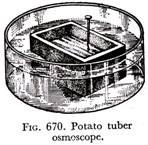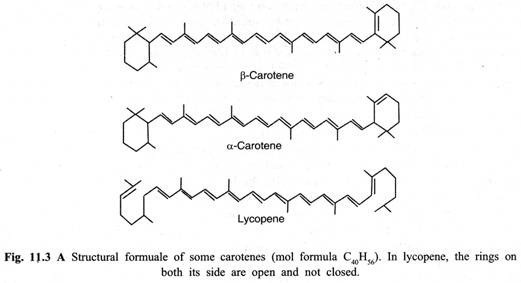The following points highlight the two main stages involved in the process of spermatogenesis. The stages are: 1. Formation of Spermatids 2. Spermiogenesis.
Spermatogenesis: Stage # 1. Formation of Spermatids:
The male germinal cells which produce the sperms are known as the primary germinal cells or primordial cells.
The primordial cells pass through following three phases for the formation of spermatids:
(i) The Multiplication Phase:
The undifferentiated germ cells or primordial cells contain large-sized and chromatin rich nuclei. These cells multiply by repeated mitotic divisions and produce the cells which are known as the spermatogonia (Gr., sperma = sperm or seed; gone = offspring). Each spermatogonium is diploid and contains 2X number or chromosomes.
(ii) The Growth Phase:
In the growth phase, the spermatogonial cells accumulate large amount of nutrition and chromatin material. Now each spermatogonial cell is known as the primary spermatocyte.
(iii) The Maturation Phase:
The primary spermatocytes are ready for first meiotic or maturation division. The homologous chromosomes start pairing (synapsis), each homologous chromosome splits longitudinally and by the chiasma formation the exchange of genetic material or crossing over takes place between the chromatids of the homologous chromosomes. The DNA amount is duplicated in the beginning of the division.
By first meiotic division or homotypic division, two secondary spermatocytes are formed. Each secondary spermatocyte is haploid and contains X number of chromosomes. Each secondary spermatocyte passes through the second maturation or second meiotic or heterotypic division and produces two spermatids.
Thus, by a meiotic or maturation division, a diploid spermatogonium produces four haploid spermatids. These spermatids cannot act directly as the gametes so they have to pass through the next phase, the spermiogenesis.
Spermatogenesis: Stage # 2. Spermiogenesis:
The metamorphosis or differentiation of the spermatids into the sperms is known as spermiogenesis. Because the sperm or spermatozoon is a very active and mobile cell so as to provide great amount of mobility to the sperm, the superfluous material of the developing spermsis discarded.
For the reduction of the weight of the sperms, following changes occur in the spermatids:
(i) Changes in the Nucleus:
The nucleus loses water from the nuclear sap, shrinks and assumes different shapes in the different animals. The sperm nucleus in man and bull becomes ovoid and laterally flattened. In rodents and amphibians, the sperm nucleus becomes scimitar- shaped with pointed tip. In birds and molluscs, the nucleus becomes spirally twisted like a cork screw.
The bivalve molluscs have the round sperm nucleus. The shape of the nucleus also determines the shape of the sperm head which becomes fully adapted for the active propulsion through the water. The RNA contents of the nucleus and the nucleolus are greatly reduced, The DNA becomes more concentrated and the chromatin material becomes closely packed into small volume.
(ii) Acrosome Formation:
The acrosome occurs at the anterior side of the sperm nucleus and contains proteases enzymes which help it in the easy penetration inside the egg. The acrosome is formed by the Golgi apparatus. The Golgi apparatus is concentrated near the anterior end of the sperm nucleus to form the acrosome.
One or two vacuoles of the apparatus become large and occupy the place between the tubes of Golgi apparatus. Soon after a dense granule known as the proacrosomal granule develops inside the vacuole. Leblond (1955) found the proacrosomal granule rich in the mucopolysaccharides. The proacrosomal granule attaches with the anterior end of the nucleus and enlarges into the acrosome.
The membranes of Golgi vacuoles form the double membrane (unit membrane of lipoprotein) sheath around the acrosome and forms the cap-like structure of the spermatozoon. The rest of the Golgi apparatus becomes reduced and discarded from the sperm as Golgi rest. In the sperms of certain animals, an acrosomal cone or axial body also develops in between the acrosome and the nucleus.
(iii) Centrioles:
The two centrioles of the spermatids become arranged one after the other behind the nucleus. The anterior one is known as the proximal centriole and posterior one is known as the distal centriole. The distal centriole changes into the basal bodies and gives rise to the axial filament of the sperm.
The axial filament or the flagellum is composed of a pair of central longitudinal fibres and nine peripheral fibres. The distal centriole and the basal part of the axial filament occur in the middle piece of the spermatozoa. The mitochondria of the spermatids fuse together and twist spirally around the axial filament.
Thus, most of the cytoplasmic portion of the spermatid except the nucleus, acrosome, centriole, mitochondria and axial filament, is discarded during the spermiogenesis.


